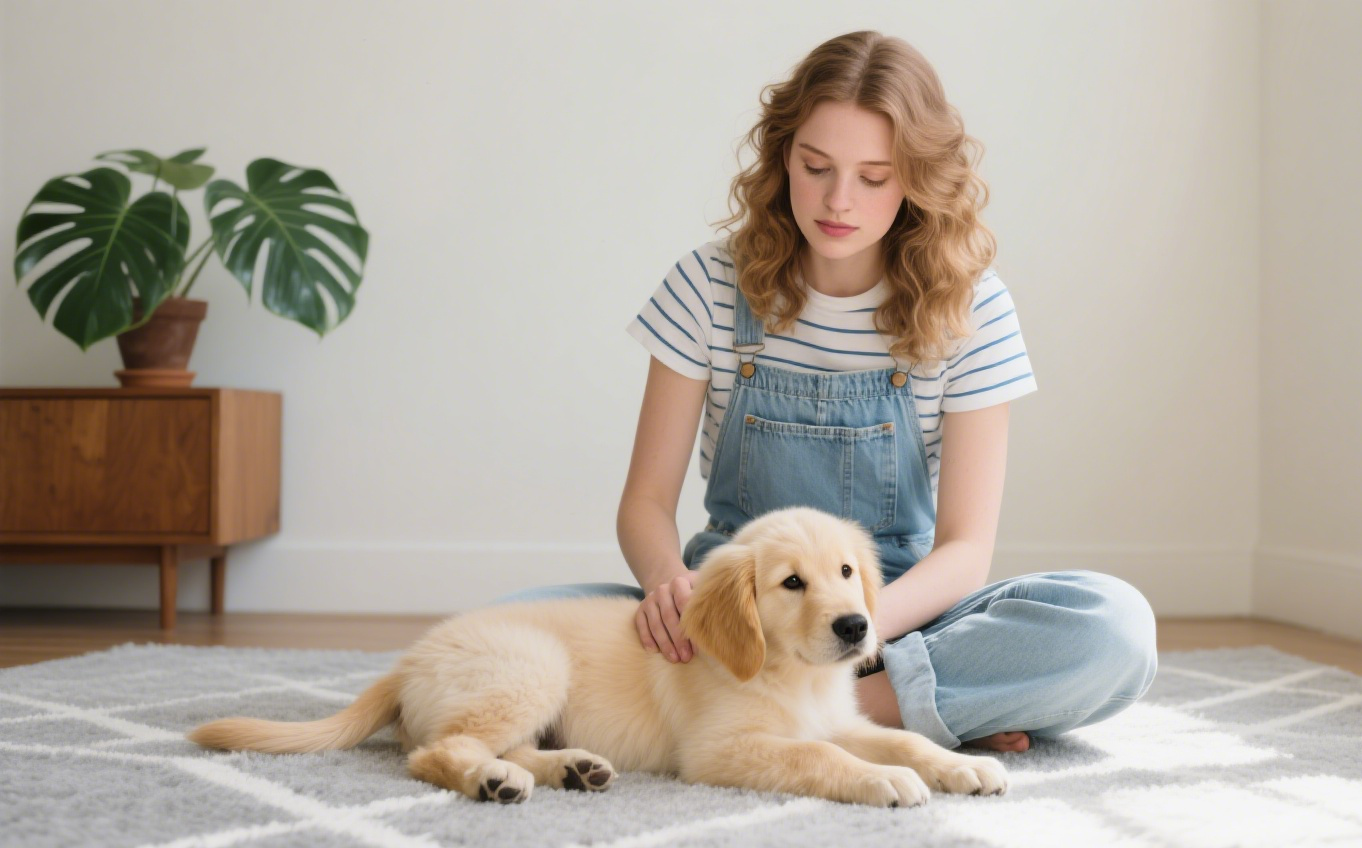Best Wet Dog Food for Sensitive Stomach (Vet-Approved & Gentle)
When my pup Ethan was having random gurgly nights, he still wanted dinner but every bowl of dry kibble sounded like a dare. Switching to gentle wet food was the bridge that got us through those iffy days—more moisture, softer texture, and easier digestions. Below is the exact framework we used: what worked (and why), the red-flags that mean “call your vet,” our simple routine for transition, and a comparison table to help you pick the right can fast. Everything here stays in the lane of vet-approved, limited-ingredient, and easy-to-digest choices.
Red flag — see your vet first: repeated vomiting, black/tarry stool, blood in vomit or stool, sudden lethargy, dehydration, belly pain, or symptoms lasting more than 24–48 hours. Sensitive stomach ≠ emergency care.
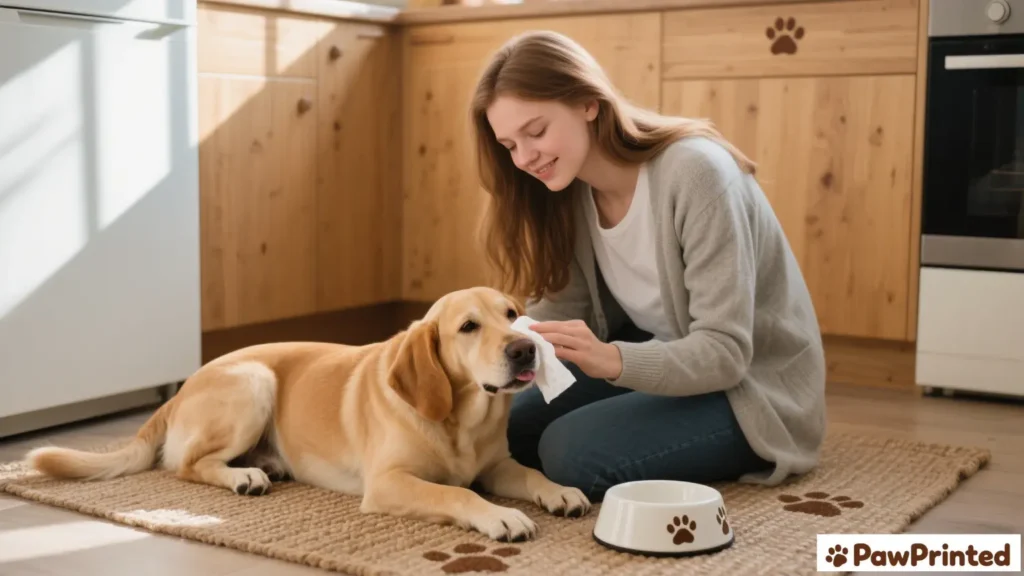
What Worked For Us (Top Gentle Wet Picks)
- The night Ethan’s tummy first went off the rails, we promised ourselves to change only one thing at a time. Our vet asked us to start gentle and write everything down. So we opened a can of a simple turkey-and-rice LID, spooned a splash of warm water over it, and watched. That first evening with turkey LID felt like a small exhale—clean label, mild gravy, easy to mash, and his appetite finally nudged back.
- Day two wasn’t perfect, so we switched the protein only once for a clearer read: a broth-forward whitefish & potato LID. That can became our “reset” meal—short ingredient list, minimal extras—ideal for when we weren’t sure which variable was stirring things up.
- When his appetite dipped on day three, we leaned on palatability. A smooth loaf of salmon & rice went down easily even when he looked uncertain. On busier days when we needed something we could find anywhere, we kept a couple cans of Hill’s Sensitive Wet on hand—steady formula, easy to portion, no surprises.
- By the end of the week, stools were firming, so we moved toward a routine we could live with. We transitioned 25% at a time to Hill’s Sensitive Stomach & Skin (dry) as his daily base—consistent, gentle, and simple to measure. On days he needed extra encouragement or we wanted to add probiotics from a different line, we alternated portions with Purina Pro Plan Sensitive (salmon & rice, dry), which paired nicely with our notes-first approach.
- Nothing here is magic—just calm, consistent choices. We rotate within this small circle: turkey LID when we want predictability, whitefish & potato LID when we need a reset, salmon & rice or Hill’s Sensitive Wet when appetite wobbles, then settle into Hill’s Sensitive Dry or Purina Pro Plan Sensitive Dry once things stabilize. One change at a time, notes on every bowl—that’s what actually moved the needle for us.
Why Sensitive Stomachs Need Special Care
“Sensitive stomach” can hide a handful of different realities—fast gobblers, mild intolerances, stressy guts, or simply dryness from low moisture diets. Wet food adds water, softens texture, and lowers chew effort, which can reduce GI friction on tough days. Limited-ingredient cans cut down the guesswork so you can spot a troublemaker faster. Keep mealtimes calm, use measured portions, and change one thing at a time.

Our Simple Wet-Food Routine
Step 1: Replace 25–30% of the bowl with new wet food for the first 2 days. Watch stool and appetite.
Step 2: Add a splash of warm water to slow eating and help hydration.
Step 3: Stick with one protein for 5–7 days before rotating.
Step 4: Feed in calm settings and keep distractions low.
Step 5: Track notes on stool quality, energy, and portion size.
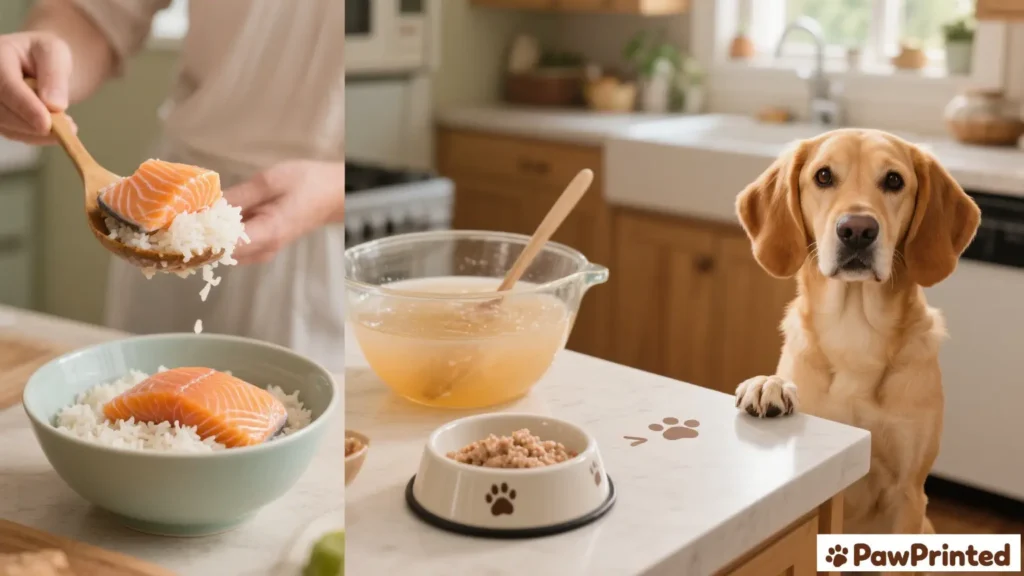
Comparison Table: Gentle Wet Options
| Option | Why It Helps | Best For | Link |
|---|---|---|---|
| Turkey (LID) | Simple label, mild gravy | Mild sensitivities | go/lid-turkey-wet |
| Salmon & Rice | Palatable, modest fat | Poultry-sensitive dogs | go/salmon-rice-sensitive-wet |
| Whitefish & Potato | Minimal extras, broth-based | Elimination weeks | go/whitefish-potato-wet |
| Lamb & Brown Rice | Flavorful yet gentle | Picky eaters | go/lamb-brownrice-wet |
| Hill’s Sensitive Wet | Balanced formula, trusted brand | Daily sensitive diet | go/hills-sensitive-wet |
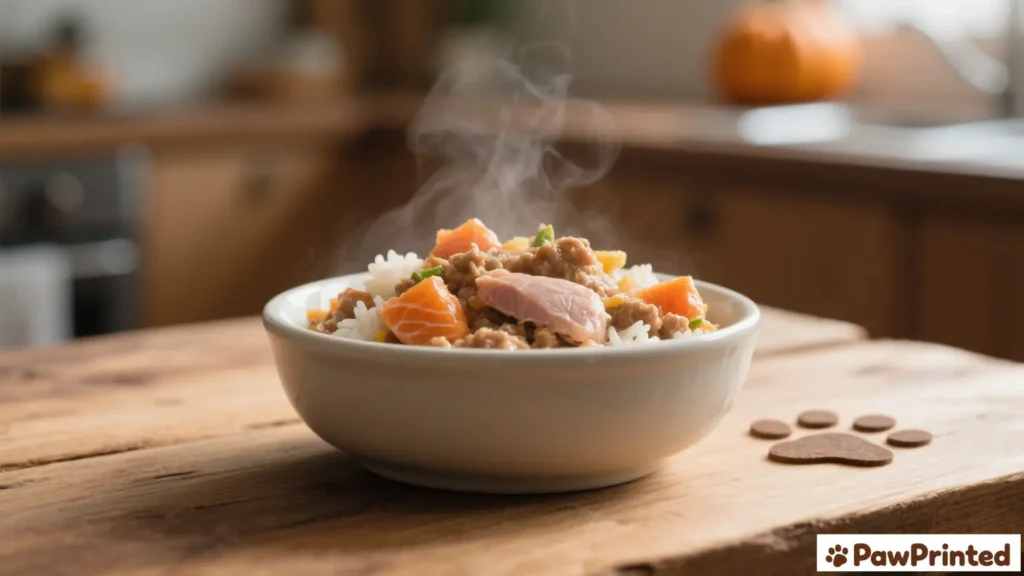
FAQ
Neither wet nor dry food is a universal winner—what matters is your dog’s unique digestion. Wet food provides extra moisture, softer texture, and higher palatability, which often helps dogs with mild diarrhea or those reluctant to eat. Dry food, once tolerated, can be easier to store, consistent in formula, and gentler on dental health if combined with the right texture. Many vets suggest starting with wet food options for 1–2 weeks, then slowly transitioning to dry food once the tummy stabilizes. Some families even use a half-and-half approach for balance.
Minor tummy upset from diet sensitivity may calm in as little as 3–5 days on a limited-ingredient wet food. Look for improvements in stool quality, fewer bouts of gas, and steadier appetite. For Ethan, switching to LID formulas gave visible changes within a week. However, if symptoms persist beyond 7–10 days—or if you see red flags like vomiting blood, black stool, or lethargy—consult your vet immediately. Wet food should be introduced gradually, keeping other variables (treats, chews) steady to avoid masking results. For puppies or seniors, always check with your vet as their digestion is more delicate.
Yes, puppies can benefit from sensitive-stomach wet food, provided it’s labeled as puppy-appropriate and vet-approved. Puppy-friendly wet recipes often include chicken or rice with controlled minerals to support growth. When Ethan was younger, we tested mild formulas and found his digestion steadier compared to dry kibble. If you’re raising a pup, look at both store-bought options and homemade puppy-safe recipes. Always introduce gradually, splitting meals into smaller, frequent portions. Your vet may recommend adding probiotics to further strengthen your pup’s gut. Remember: not all adult sensitive-stomach cans are suitable for growth—always double-check the label.
Many vets recommend probiotics as a supportive aid when transitioning diets, especially for sensitive tummies. Dog-specific probiotics can help balance gut flora, improve stool consistency, and reduce the risk of future flare-ups. For Ethan, pairing wet food with a probiotic supplement made transitions smoother. However, choose one product at a time and give it at least 7–10 days before evaluating results. Too many changes—like new food, treats, and supplements all at once—can make it impossible to know what’s working. Probiotics are generally safe but consult your vet for proper dosage and to ensure they fit your dog’s health profile.
Yes. Dogs with sensitive stomachs do best with short, transparent ingredient lists. Avoid artificial colors, heavy gravies with gums, and proteins that have triggered issues before. Common triggers include beef, dairy, and soy. When in doubt, stick to single-protein recipes like turkey LID or whitefish & potato. Avoid frequent switching—consistency is key. If you’re unsure, start with a vet-approved limited-ingredient formula and track stool quality daily. For dogs with allergies, you may also want to explore our guide to dog food for allergies.
If you don’t want to cook daily, check our dry food picks — those were Ethan’s daily backups.
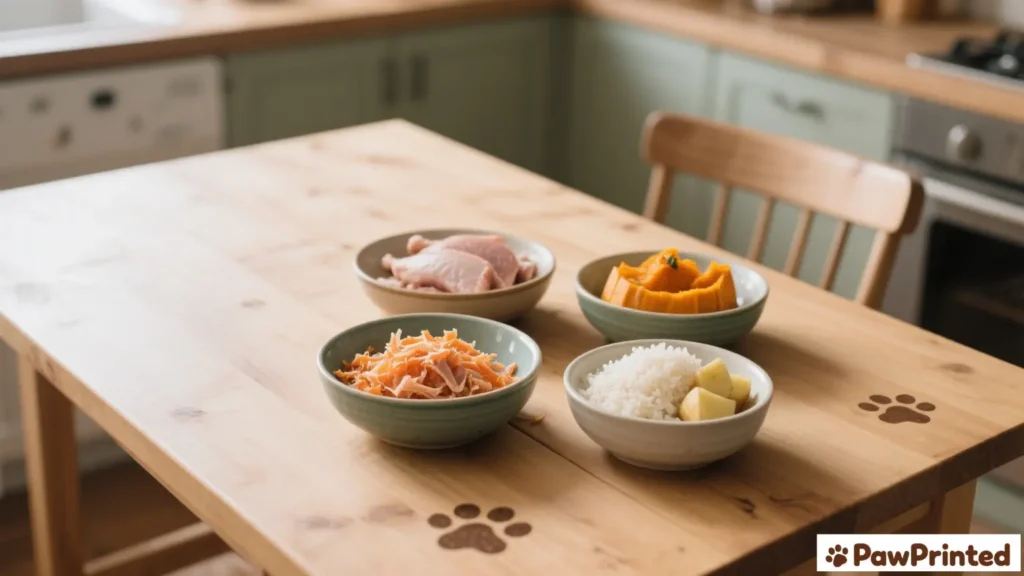
Wrapping It Up
Wet food can be the peace treaty between a grumpy gut and a hungry pup. Keep it simple, add moisture, and give each recipe a fair trial. If you’re stuck, start with gentle wet food, then move to steady dry picks. And if your dog shows red-flag symptoms, your vet is the first stop—not the pet aisle.
Thanks for reading and supporting PawPrinted—Ethan and our little kitchen crew appreciate every share and comment. Tell us what finally calmed your pup’s tummy; your tip might help the next worried dog parent.
Follow PawPrinted on Pinterest
See new gentle dog food ideas, tummy-friendly tips, and real kitchen tests.

